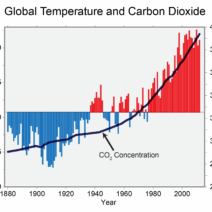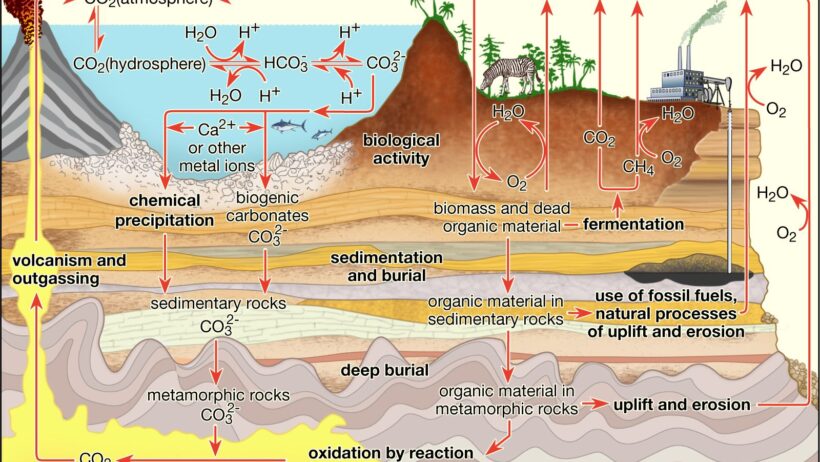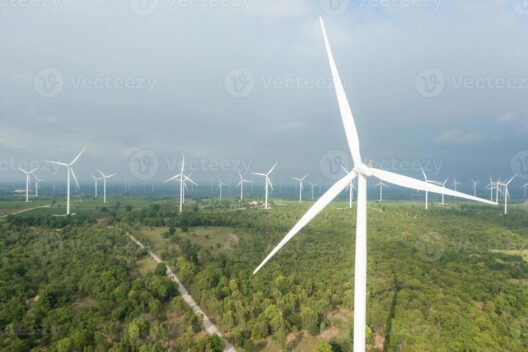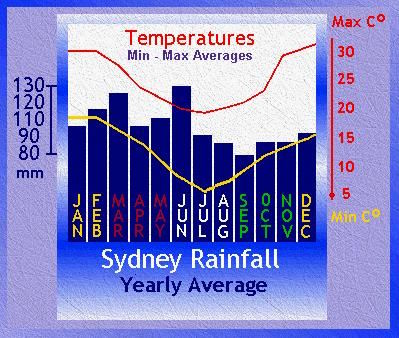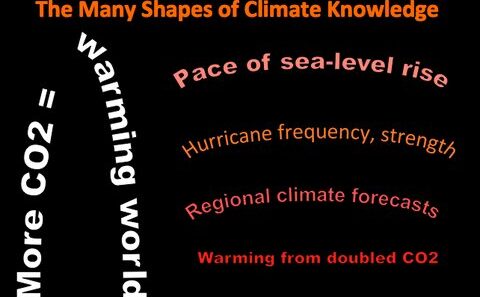As we traverse the complex labyrinth of our planet’s ecosystems, a question arises: what if the very air we breathe is both a lifeline and a perilous challenge? This duality encapsulates the role of carbon and carbon dioxide (CO₂) in climate change, steering the course of our planet’s future. Understanding this intricate relationship is crucial for implementing effective solutions to mitigate global warming.
Carbon is an omnipresent element, integral to life as we know it. Found in the sunlit leaves of trees, in the nutrients of soil, and even within our own bodies, carbon predominantly exists in various forms. While carbon in itself is essential, its volatile form—carbon dioxide—has emerged as a notorious greenhouse gas with formidable implications for the Earth’s warming dynamics. During the natural carbon cycle, carbon atoms circulate among the atmosphere, land, and oceans. However, anthropogenic influences, particularly the combustion of fossil fuels and deforestation, have severely disrupted this cycle, leading to elevated concentrations of CO₂ in the atmosphere.
Carbon dioxide’s ability to trap heat is profound, producing what is known as the greenhouse effect. Solar radiation enters the Earth’s atmosphere, warming the surface. In a balanced carbon cycle, some of this heat is subsequently radiated back out into space. However, an augmented canopy of CO₂ acts like a thick blanket, preventing heat from escaping and consequently elevates global temperatures. This gradually intensifying warmth has orchestrated a plethora of climatic disturbances, including not only rising temperatures but also extreme weather patterns, shifting agricultural zones, and melting ice caps.
One might ponder: is this change invariably negative? While there are some potential benefits to a warmer climate—such as longer growing seasons in certain regions—the overarching consequences tend to be deleterious. The fragile balance that sustains biodiversity is at risk of collapse. Species unable to adapt quickly to rapid changes face extinction, while ecosystems, much like intricate clockwork, can suffer catastrophic failure if one cog malfunctions. The Intergovernmental Panel on Climate Change (IPCC) warns that the world could face dire consequences if global temperatures rise beyond 1.5°C above pre-industrial levels, exacerbating the impact on vulnerable populations.
As the narrative unfolds, it becomes clear that mitigating the ramifications of carbon emissions is not an insurmountable challenge. Rather, it is a clarion call to action. Individuals, communities, and governments worldwide must mobilize resources and innovation to address this pressing issue. To combat global warming effectively, a multifaceted approach is pivotal.
First, a significant shift toward renewable energy sources can dramatically curtail CO₂ emissions. Solar, wind, and hydropower are laden with untapped potential, offering clean alternatives that reduce our dependence on fossil fuels. Investment in these sectors paves the way for sustainable job creation and economic growth, proving that the transition to a greener economy is not merely an environmental necessity but also an economic opportunity.
Second, enhancing energy efficiency is paramount in reducing our carbon footprint. From retrofitting buildings to adopting smarter appliances, innovative technologies exist that conserve energy and consequently lower emissions. Governments can enforce stringent regulations that mandate energy-efficient practices across industries, making significant strides toward reducing overall consumption.
Third, afforestation and reforestation initiatives can serve as a natural remedy to carbon overabundance. Trees absorb CO₂, acting as vital carbon sinks. Community-driven tree planting programs, alongside support for natural habitats, can augment our environment’s ability to sequester carbon and restore biodiversity lost due to deforestation. Educational initiatives can empower citizens to engage in conservation efforts at the local level, fortifying community resilience against climate impacts.
Furthermore, the promotion of sustainable agriculture can play a critical role in our global carbon strategy. By adopting regenerative farming practices, such as crop rotation, cover cropping, and reduced tillage, farmers can enhance soil health, optimize carbon storage, and minimize CO₂ emissions associated with conventional agriculture. Supporting local and organic produce fosters a sense of community while reducing the carbon footprint of food transport.
Policy reform is another crucial component. Implementing carbon pricing mechanisms can incentivize businesses to rein in their emissions. By putting a cost on carbon, we can encourage companies to innovate and pursue cleaner alternatives. Moreover, international cooperation through agreements like the Paris Accord can mobilize countries to commit to ambitious emissions reduction targets, fostering a sense of shared responsibility for mitigating climate change.
However, the challenge does not end here; it requires collective action from individuals in their everyday lives. Conscious consumerism, such as choosing sustainable products, reducing waste, and opting for lower-carbon transportation modes, can contribute to a broader cultural shift. Each small decision, when amplified collectively, has the power to catalyze monumental change. Are you prepared to be part of the solution? This is a call to arms for advocates of positive environmental change.
The road to addressing global warming through carbon mitigation is fraught with challenges, yet it is also teeming with opportunities. By embracing innovative solutions, advocating for sustainable practices, and committing to collective action, a sustainable future is within reach. The allure of a healthier planet beckons us—not just for our generation but for future ones. Together, we can rewrite our narrative and secure a harmonious coexistence with our environment. The time for action is now, as the longer we delay, the greater the challenge will become.


